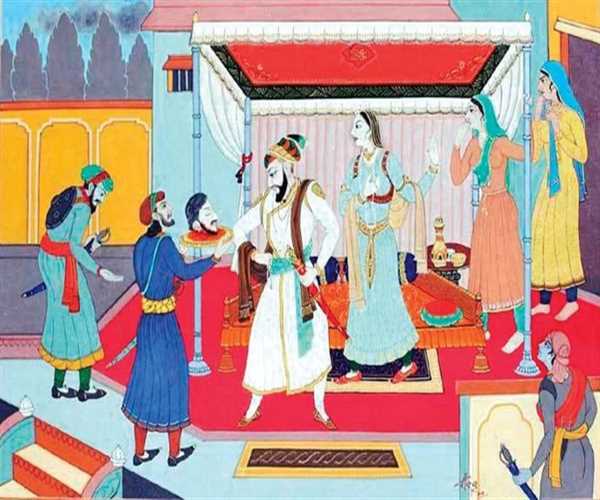Search here

21-Jun-2024 , Updated on 10/7/2025 2:26:34 AM
The Dark Legacy of Aurangzeb: A Tale of Brutality and Betrayal
On the fateful night of December 28, 1704, Guru Gobind Singh Ji, accompanied by his family and devoted followers, departed Anandpur Sahib. They were ambushed by merciless Mughal forces along the way. The battle that ensued claimed the lives of Guru Sahib's valiant sons, Sahibzade Ajit Singh and Jujhar Singh, who met martyrdom while defending their faith. The anguish of their loss shattered Guru Sahib's soul. Soon after, Mata Gujri Kaur and his younger sons, Sahibzade Jorawar Singh and Fateh Singh, were seized and subjected to brutal torture.
Thrown into the chilling confines of the cold tower, known ominously as the calling tower, they endured the biting cold of December. Their innocent hands grew numb under the relentless blasts of the icy wind. Summoned before Guru Gobind Singh Sahib, they faced a heart-wrenching choice. Yet, with unwavering resolve, these tender Sahibzadas, mere 8 and 6 years old, embraced martyrdom without hesitation. The very walls meant to end their lives inexplicably crumbled, sparing them, albeit unconscious, beneath mocking cat masks.
This was the tale of savagery epitomized by the name "Aurangzeb." Born in 1618 in Dahod, Gujarat, Aurangzeb, the third son of Shah Jahan and Mumtaz Mahal, rose to infamy as a ruler. His disdain for his brother, Dara Shikoh, was eclipsed only by his insatiable lust for power. In 1657, seizing advantage of Shah Jahan's illness, Aurangzeb maneuvered to usurp the throne, unleashing a brutal campaign against kin and kingdom alike.
Murad Bakhsh's dissent against Aurangzeb's treachery ended in tragedy with Dara Shikoh's capture and gruesome execution. The streets of Delhi bore witness to Aurangzeb's callous parade of Dara's mutilated body, stoking public outcry. The once-beloved Shah Jahan suffered in solitary confinement and was denied even the basic sustenance of water until his death.
Aurangzeb's reign, marked by bloodshed and religious tyranny, culminated in atrocities against Guru Tegh Bahadur and the Kashmiri Pandits. Guru Tegh Bahadur's defiance in the face of Aurangzeb's demands led to a torturous spectacle of martyrdom, setting a grim precedent. Chhatrapati Sambhaji Maharaj's unwavering refusal to submit to Aurangzeb's terms unleashed a torrent of sadistic torture that defies comprehension.
Non-Muslims under Aurangzeb's rule suffered under the oppressive burden of the Jizya tax and forced conversions, while Hindu temples and Sikh gurudwaras were desecrated, defiled, and demolished. Aurangzeb's ruthlessness spared no one, casting a shadow of fear and anguish over the land.
Today, Aurangzeb's legacy remains shrouded in historical revisionism, portraying him as a benefactor rather than the merciless tyrant he truly was. The truth of his reign, painted in the blood of innocents and the broken spirits of millions, stands starkly against the sanitized narratives of his supposed greatness.
To read more: https://yourviews.mindstick.com/view/86689/why-we-call-akbar-the-great-not-shivaji-the-great

Student
I am a content writter !
Comments
Join Our Newsletter
Subscribe to our newsletter to receive emails about new views posts, releases and updates.
Copyright 2010 - 2025 MindStick Software Pvt. Ltd. All Rights Reserved Privacy Policy | Terms & Conditions | Cookie Policy